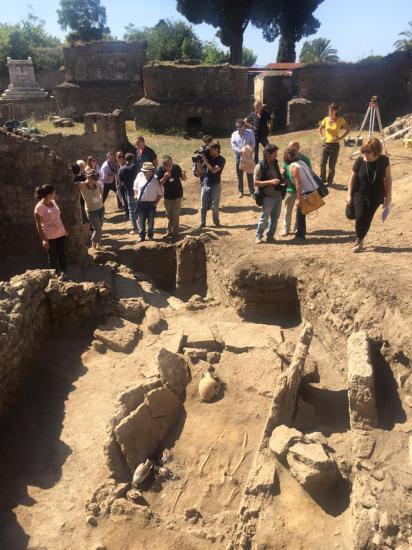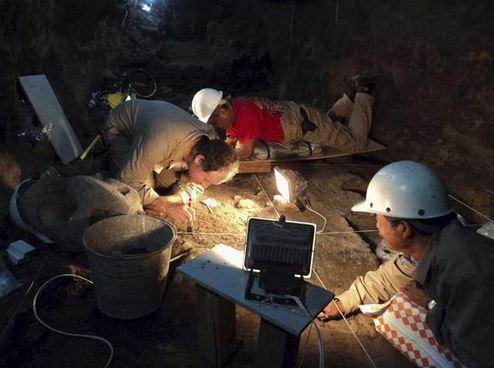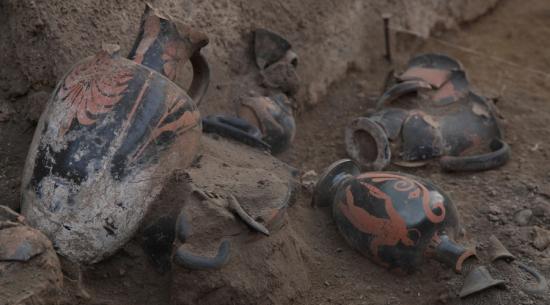Source - http://www.rt.com/news/316085-ancient-tomb-pompeii-italy/?
 © Archeological site of Pompeii press office
© Archeological site of Pompeii press office
A pre-Roman tomb has been unearthed in Pompeii, Italy, containing the remains of an adult woman and numerous clay jars from the fourth century BC. A French archaeological team found the burial chamber by surprise.
“It is an exceptional find for Pompeii because it throws light on the pre-Roman city, about which we know so very little,” said Massimo Osanna, the archaeological superintendent of Pompeii, as quoted by the Local.
The tomb dates back to the time of the Samnites, an Italic people living in the southern-central part of the peninsula who fought against the Romans.
It is believed the Romans knew of the tomb's presence and did not disturb the site or build on it. The tomb managed to survive undisturbed for more than 2,000 years.
 © Archeological site of Pompeii press office
© Archeological site of Pompeii press office
The tomb's contents are expected to provide useful clues for scholars about the history of the site under the Samnites.
“The burial objects will show us much about the role of women in Samnite society and can provide us with a useful social insight,” Osanna said.
The adult woman was buried with numerous clay jars, known as amphorae, which come from other regions of Italy and reveal the extent of trade between the Samnites at Pompeii and other areas across the Italian Peninsula.
 The jars, which will be analyzed in the coming weeks, are believed to contain cosmetics, wine, and food.
The jars, which will be analyzed in the coming weeks, are believed to contain cosmetics, wine, and food.
The area around the tomb will now be excavated to determine if there are more in the area. According to Osanna, it's very likely that additional tombs will also be found.
 © Archeological site of Pompeii press office
© Archeological site of Pompeii press office
“Tombs are not normally found alone,” he said. “It's a miracle that this has survived, but I'm sure Pompeii has more gifts to give.”
However, Pompeii was mostly destroyed and buried under 4 to 6 meters (13 to 20 feet) of ash and pumice following the eruption of Mount Vesuvius in 79 AD, so it remains uncertain how intact any potential tombs would be. The area was also heavily shelled during World War II.